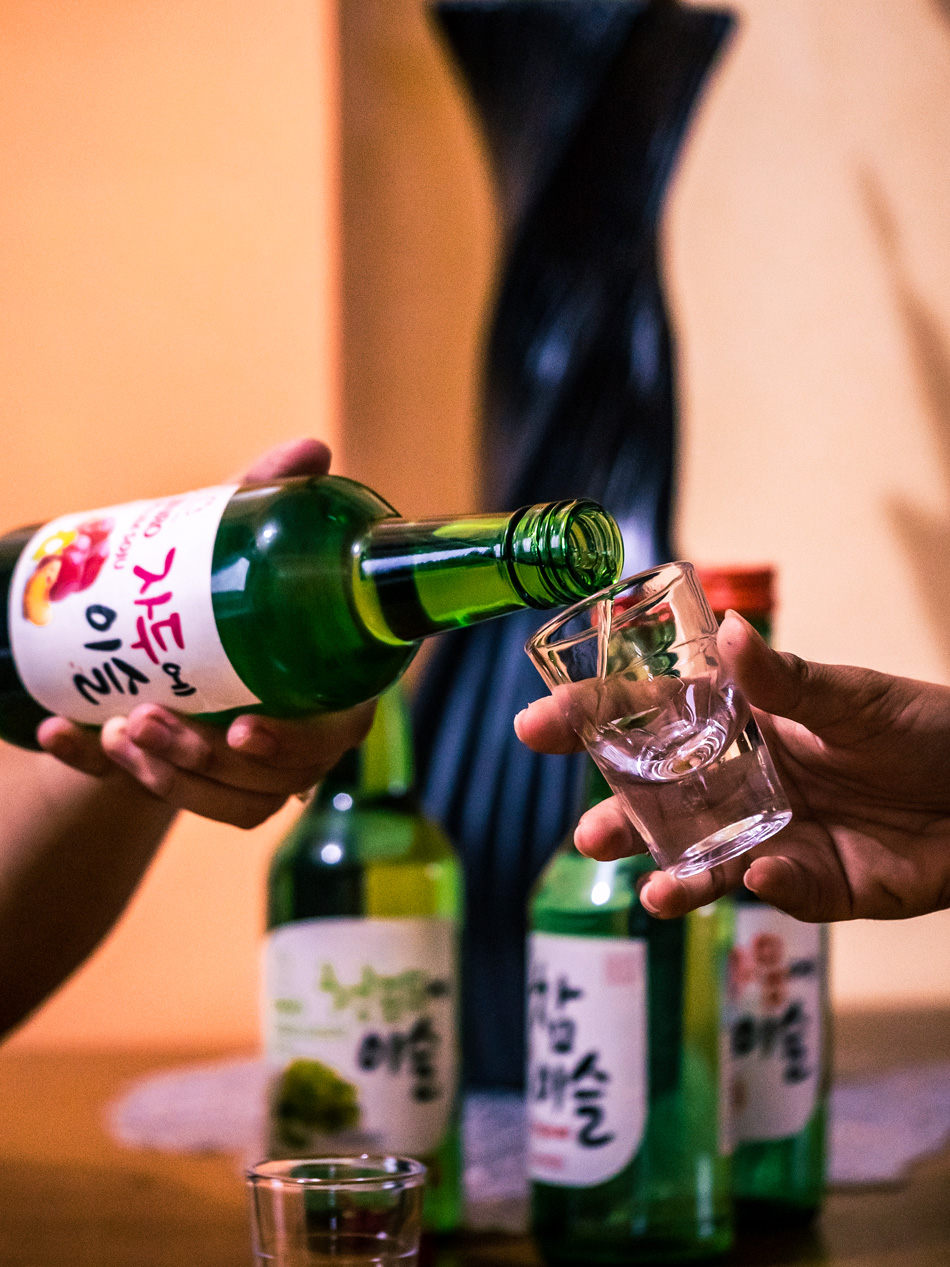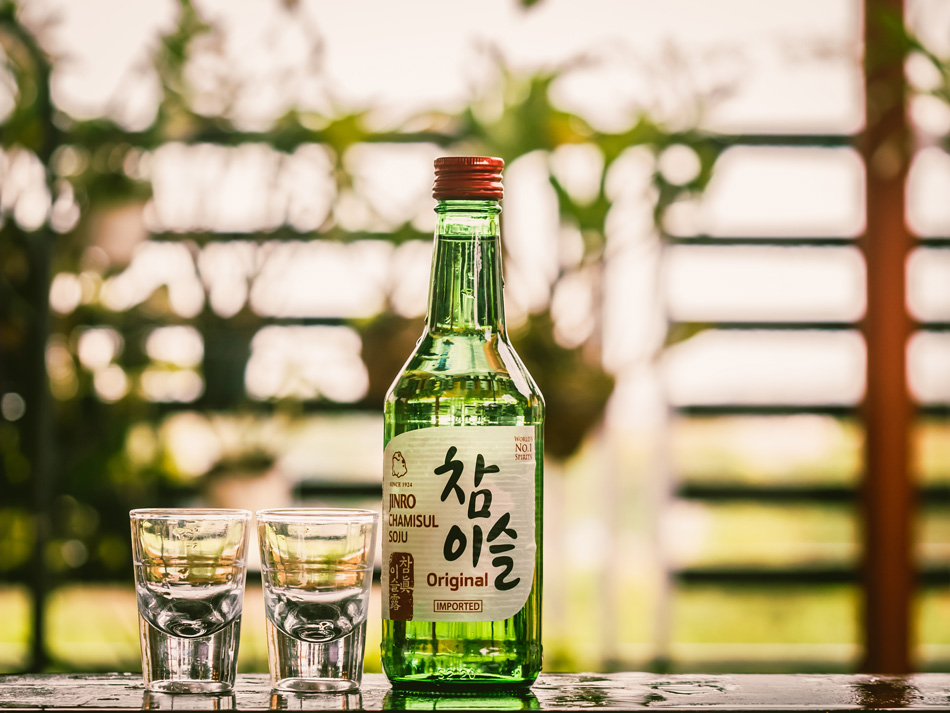Copycats plague soju market: How to tell if it’s the real drink | ABS-CBN
ADVERTISEMENT

Welcome, Kapamilya! We use cookies to improve your browsing experience. Continuing to use this site means you agree to our use of cookies. Tell me more!
Copycats plague soju market: How to tell if it’s the real drink
Copycats plague soju market: How to tell if it’s the real drink
Jaehwa Bernardo,
ABS-CBN News
Published Oct 14, 2023 11:31 AM PHT
|
Updated Oct 14, 2023 11:57 AM PHT
ICHEON, South Korea — As K-pop and K-drama gained immense global popularity, so has soju, the iconic beverage often considered South Korea’s national drink.
ICHEON, South Korea — As K-pop and K-drama gained immense global popularity, so has soju, the iconic beverage often considered South Korea’s national drink.
But as the clear spirit continues to win over palates around the world, imitation products have become a problem in the market, an industry official said.
But as the clear spirit continues to win over palates around the world, imitation products have become a problem in the market, an industry official said.
“In recent times, imitation products have been manufactured to closely resemble Jinro products, making it challenging for consumers to differentiate between them,” said Hwang Jung-ho, managing director for overseas business at HiteJinro, referring to the soju brand that his company produces.
“In recent times, imitation products have been manufactured to closely resemble Jinro products, making it challenging for consumers to differentiate between them,” said Hwang Jung-ho, managing director for overseas business at HiteJinro, referring to the soju brand that his company produces.
So how can consumers distinguish between authentic soju from copycat beverages? The answer, at least in the case of Jinro, lies in the “quality” of the drink’s taste and bottle label.
So how can consumers distinguish between authentic soju from copycat beverages? The answer, at least in the case of Jinro, lies in the “quality” of the drink’s taste and bottle label.
ADVERTISEMENT
“Jinro distinguishes itself by using rice, barley, tapioca, and natural additives, and by subjecting the soju to four rounds of filtration with bamboo charcoal, making the quality difference clear,” Hwang told select Filipino journalists who recently visited HiteJinro’s distillery in Icheon City as part of a company-sponsored trip.
“Jinro distinguishes itself by using rice, barley, tapioca, and natural additives, and by subjecting the soju to four rounds of filtration with bamboo charcoal, making the quality difference clear,” Hwang told select Filipino journalists who recently visited HiteJinro’s distillery in Icheon City as part of a company-sponsored trip.
“A helpful tip when choosing Jinro products is to look for the frog mascot on the soju bottle label, which should make it easy to quickly distinguish Jinro from other brands,” he added.
“A helpful tip when choosing Jinro products is to look for the frog mascot on the soju bottle label, which should make it easy to quickly distinguish Jinro from other brands,” he added.
As proof of its popularity in South Korea and internationally, earlier this year, Jinro topped Drinks International’s The Millionaires’ Club list, having sold more than 100 million nine-liter cases in 2022.
As proof of its popularity in South Korea and internationally, earlier this year, Jinro topped Drinks International’s The Millionaires’ Club list, having sold more than 100 million nine-liter cases in 2022.
The list, published annually by the renowned drinks journal, features international spirit brands that sell over one million nine-liter cases on a yearly basis.
The list, published annually by the renowned drinks journal, features international spirit brands that sell over one million nine-liter cases on a yearly basis.
“Imitation products may appear to follow Jinro’s lead externally, but I believe they cannot replicate the quality and excellence built over Jinro’s years of history,” said Hwang, whose company was established in 1924.
“Imitation products may appear to follow Jinro’s lead externally, but I believe they cannot replicate the quality and excellence built over Jinro’s years of history,” said Hwang, whose company was established in 1924.
ADVERTISEMENT
HiteJinro has been exporting soju to the Philippines since the 1980s through local distributors before establishing a local subsidiary in 2019. Its products include the Chamisul line and a number of fruit-flavored soju.
HiteJinro has been exporting soju to the Philippines since the 1980s through local distributors before establishing a local subsidiary in 2019. Its products include the Chamisul line and a number of fruit-flavored soju.
In 2022, the Philippine soju market was estimated to be at 7,545,000 liters in volume or 21 million bottles, said Hwang, citing data from market research firm Euromonitor.
In 2022, the Philippine soju market was estimated to be at 7,545,000 liters in volume or 21 million bottles, said Hwang, citing data from market research firm Euromonitor.
“Of this, Jinro accounts for roughly half of the market based on export quantities. Jinro’s sales have grown by approximately 40 percent since the establishment of the [subsidiary in 2019],” he said.
“Of this, Jinro accounts for roughly half of the market based on export quantities. Jinro’s sales have grown by approximately 40 percent since the establishment of the [subsidiary in 2019],” he said.
Hwang believes soju’s popularity in the Philippines “has been boosted through various efforts such as sponsorship, social media activities, participation in trade shows, exhibitions, and tasting events to raise awareness of the distinctive strengths of the Jinro brand.”
Hwang believes soju’s popularity in the Philippines “has been boosted through various efforts such as sponsorship, social media activities, participation in trade shows, exhibitions, and tasting events to raise awareness of the distinctive strengths of the Jinro brand.”
Asked if HiteJinro plans to introduce new soju flavors and products in the Philippines, Hwang said, “Jinro is committed to providing consumers with new experiences. We consistently monitor the market and are open to actively considering new product launches if that's what consumers desire.”
Asked if HiteJinro plans to introduce new soju flavors and products in the Philippines, Hwang said, “Jinro is committed to providing consumers with new experiences. We consistently monitor the market and are open to actively considering new product launches if that's what consumers desire.”
ADVERTISEMENT
ADVERTISEMENT




